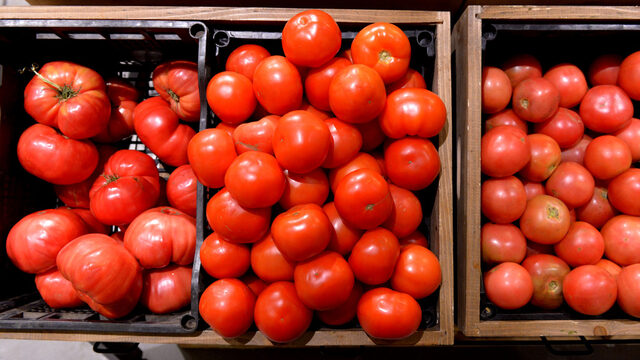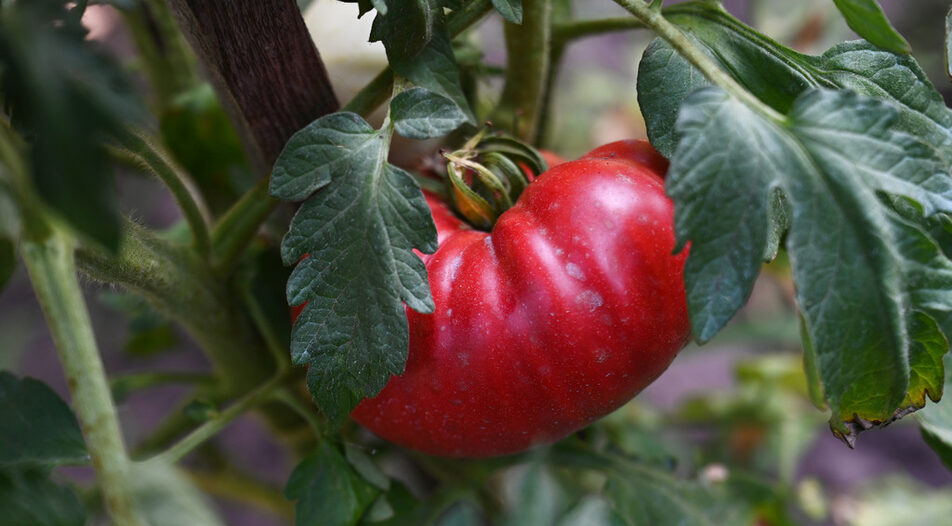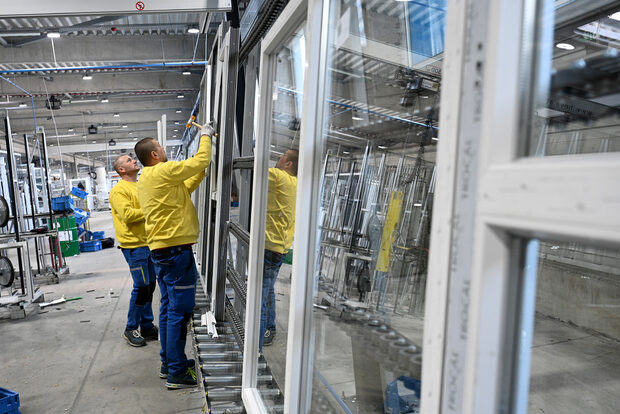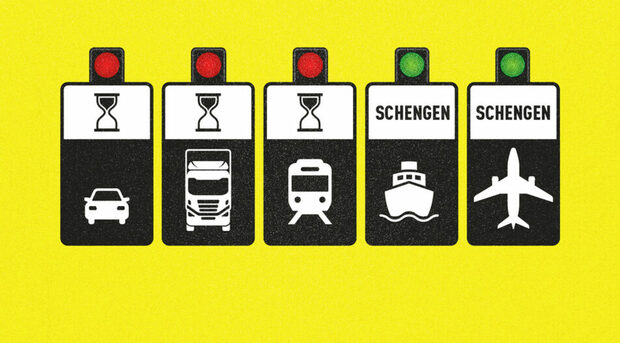From the Shopska salad to lyutenitsa, almost all your favorite Bulgarian dishes consist of tomato. Although the plant has only been in local gardens for about 130 years, it has become integral to Bulgarian life and a staple part of our culinary repertoire. However, despite high consumption - an average of around 20 kg of fresh tomatoes per person per year - state funding and the competitive price, local production has visibly stagnated and shrunk in recent decades.
It was not always so. In the 1960s and 1970s, Bulgaria was among the top exporters of tomatoes, and in some periods even ranked first in the world in terms of production sold abroad. Production at that time was 8-9 times the current level and exports more than 10 times higher than now. "Back then we produced enough to satisfy domestic demand, and at the same time we exported 400 - 500 thousand tons a year," Nikolay Valkanov, founder of the IntelliAgro NGO and executive director of the Association for Modern Trade, told Capital Weekly. However, the calculations must also take into account the much more powerful canning industry at the time, which had a solid international presence, as well as the fact that membership in the Council for Mutual Economic Assistance (CMEA - the economic organization of socialist countries) ensured profiling of what was produced and where it was sold.
Now the picture has changed dramatically. Bulgarian farmers grow about 120-150,000 tonnes of tomatoes a year, according to data from the Ministry of Agriculture. This production fails to cover domestic demand and another 80-90,000 tonnes are imported annually. At the same time, a small part of the local production is sold abroad - about 10-15,000 tonnes per year, mostly premium products.
As Socialist nostalgics would say, "democracy took away our tomatoes." But this cliche does not reflect the whole picture. Inefficient farming organizations, low productivity and labor shortages have contributed to poor performance, while direct funding in the form of subsidies distorts the market and leads to momentary diversions that do little to compensate. However, there is cause for optimism because the volume of exported production has nudged up over the last decade. In recent years, however, accelerating climate changes - high summer temperatures, periods of drought and new pests - have also had a significant impact on production, especially outdoors. This will only intensify in the future.
The modern tomato balance
Even today, the tomato plays a central role in the production and consumption of fresh agricultural products in the country. It is both the most exported and the most imported fresh vegetable (or fruit, for those who see it that way). Between 2017 and 2021, the average level of self-sufficiency - the domestic demand that is met by domestic production - is 64%, the agricultural ministry estimates.
Tomatoes are grown practically all over the country. Field production is concentrated mostly in Plovdiv, Pazardzhik and Haskovo, and greenhouse production in Southwestern Bulgaria, mainly in Petrich, Sandanski, etc. During the summer season, the main source for the market is local production, while imports decline. In autumn, however, Turkish tomatoes dominate and in winter Greek tomatoes increase their share and approach Turkish tomatoes in terms of market share. Imports from Greece are highest in April and May. Cherry tomatoes are imported all year round, including from Nordic countries such as Germany and the Netherlands.
Unlike a few decades ago, today it is mainly fresh tomatoes that are consumed - household consumption is around 130,000 tonnes a year, not counting the quantities needed for hotels and restaurants, with another 30-40 000 tonnes going to the processing industry. What is definitely lacking is high quality outside the summer season. But this is the case all over the world and the problem is common to large-scale tomato production.
How Bulgarian farmers stopped growing tomatoes
Many factors have contributed to the sector's underperformance over the past three decades, but perhaps the leading one is the lack of scale in production. Relatively small and fragmented farms make growers less competitive, as individually they cannot guarantee large supplies with the frequency needed to meet the demands of large market players. Traders, therefore, often prefer to contract producers overseas who regularly supply the volumes demanded.

Associations of tomato growers offering large quantities of the same variety and quality are rare on the Bulgarian market. This is also a barrier to expansion into new and larger markets, with individual producers being placed in a weak negotiating position. This is also why we often hear how the price is many times higher at the stalls in town.
However, growers and specialists told Capital Weekly of other difficulties in tomato production related to irrigation - insufficient infrastructure and high costs, as well as a shortage of labor. And productivity in the sector overall remains lower than in competitor countries. All this hinders larger-scale production, which could otherwise relatively easily benefit from the opportunities of the short supply chain and the efficiencies of modern trade.
A widespread view in society and among producers is that subsidies to the sector are insufficient and lower than in other countries. However, this is something of a myth. Since 2016, despite the lower overall rate of the Single Area Payment Scheme in Bulgaria compared to older EU Member States, the fruit and vegetable sectors have received additional funding under coupled support schemes.
The Agricultural Ministry recognizes the need for investment support for the sector for the introduction of machinery, equipment and technology, for which there is also funding for producers. Vegetable farms need to invest in processing and harvesting machinery to automate work processes to a greater extent, which can alleviate labor shortages.
According to Nikolay Valkanov from IntelliAgro, support for fruit and vegetables should be channeled through investment measures and include mandatory elements of production protection (irrigation, measures against hail, frost, etc.). If direct subsidies remain, they should go entirely through specific producer organizations. "Bulgarian farmers must realize the need for what in the USA is called a marketing board - a grouping of producers to support marketing. Associations and branch chambers are a good thing, but they cannot solve all problems in agriculture," he adds.
Despite the general stagnation of the sector in recent years, there are hints of optimism. For the period 2020-2022, production is approaching 120 thousand tonnes per year - ten percent above the 2010-2012 average. Exports in 2021, on the other hand, will reach their highest level in 30 years - around 15 thousand tonnes. It is mostly directed to Romania, which is expected due to the geographical proximity and the connectivity of the local market with the horticulture across the Danube. If the trend continues, we can talk about Bulgaria's gradual return to the map of exporters.
The fall of Socialism and the transition from a planned to a market economy was a turning point for the sector, when the country turned from a leading exporter of agricultural products to a net importer. The main reasons are threefold and are linked to the change in the economic and political situation both domestically and internationally.
Firstly, the clustered and centrally planned production is fragmenting into small private farms which have to compete with each other and with foreign producers alike. A second reason is the geopolitical transformations of the late 1980s and early 1990s. With the collapse of the USSR, Bulgaria lost its secure market, which until then had absorbed production regardless of quality.
Last but not least, unlike now, before 1989 the labor market in Bulgaria was completely locked in and the vegetable industry had no problems in securing labor.
In the 1990s, the agricultural sector in Bulgaria decapitalized very quickly. The country entered the EU with a fragmented, technologically obsolete production and became part of a very highly competitive common market in which countries such as Spain, Italy and Greece, among others, had natural advantages. To this must be added the high emigration and loss of labor, especially in labor-intensive activities such as vegetable production with non-competitive wages.
From the Shopska salad to lyutenitsa, almost all your favorite Bulgarian dishes consist of tomato. Although the plant has only been in local gardens for about 130 years, it has become integral to Bulgarian life and a staple part of our culinary repertoire. However, despite high consumption - an average of around 20 kg of fresh tomatoes per person per year - state funding and the competitive price, local production has visibly stagnated and shrunk in recent decades.
It was not always so. In the 1960s and 1970s, Bulgaria was among the top exporters of tomatoes, and in some periods even ranked first in the world in terms of production sold abroad. Production at that time was 8-9 times the current level and exports more than 10 times higher than now. "Back then we produced enough to satisfy domestic demand, and at the same time we exported 400 - 500 thousand tons a year," Nikolay Valkanov, founder of the IntelliAgro NGO and executive director of the Association for Modern Trade, told Capital Weekly. However, the calculations must also take into account the much more powerful canning industry at the time, which had a solid international presence, as well as the fact that membership in the Council for Mutual Economic Assistance (CMEA - the economic organization of socialist countries) ensured profiling of what was produced and where it was sold.












